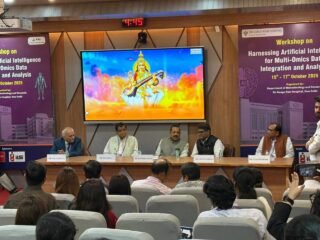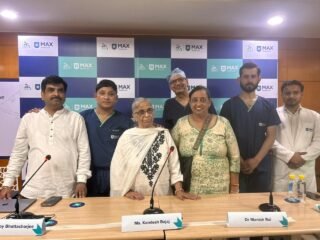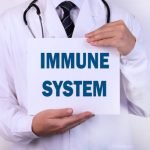New Delhi, 30 September, 2025: Breast cancer is one of the most common cancers affecting women worldwide. According to the World Health Organization (WHO), it accounts for 1 in 8 cancer diagnoses among women. While early detection drastically improves survival rates, many women overlook subtle symptoms or dismiss them as minor health issues.
The truth is, not all breast cancer symptoms begin with a lump. Sometimes, the body gives out small but important signals that, if recognized early, can save lives.
In this article, we’ll explore the 10 warning signs of breast cancer that women often ignore, along with expert advice on when to seek medical attention.
1. A Lump in the Breast or Underarm
The most recognized sign of breast cancer is a lump or thickened area in the breast or armpit. While not all lumps are cancerous (many are benign cysts), a new, hard lump that doesn’t move easily should never be ignored.
“Any lump that persists for more than two weeks warrants medical evaluation. Even painless lumps can be a sign of early breast cancer,” explains Dr. Nidhi Sharma, Oncologist at AIIMS.
2. Changes in Breast Size or Shape
Unexplained changes in the size or shape of one breast compared to the other can be an early red flag. Some women notice swelling or shrinkage that doesn’t match their menstrual cycle or weight changes.
This could indicate an underlying tumor altering the structure of breast tissue.
3. Unusual Breast Pain
Breast pain or tenderness is usually linked to hormonal fluctuations, especially around menstruation. However, persistent, localized pain in one breast that does not resolve could be a sign of concern.
“Breast cancer is not always painless. In some women, ongoing discomfort or burning sensations can be an early warning,” notes Dr. Anjali Mehta, Breast Cancer Specialist, Fortis Hospital.
4. Skin Changes on the Breast
Certain skin changes are often overlooked as simple rashes or irritation. Watch out for:
- Redness or inflammation.
- Thickening or dimpling of the skin (like an orange peel).
- Scaling or flaking around the nipple.
These could point to inflammatory breast cancer, a rare but aggressive form of the disease.
5. Nipple Discharge
Discharge from the nipple that is bloody, clear, or occurs without squeezing should be taken seriously. While some discharges are harmless, unusual secretion may signal infection, ductal issues, or early cancer.
“Spontaneous discharge—especially if it’s blood-stained—should always be investigated through a mammogram or ultrasound,” says Dr. Kavita Rao, Senior Radiologist.
6. Inverted or Changing Nipples
If your nipples suddenly become inverted (pulled inward) or change shape without a prior history, it could be a warning sign. Breast cancer can cause tightening of tissue behind the nipple, leading to this change.
7. Swelling in the Armpit or Collarbone
Breast cancer can spread to nearby lymph nodes before it’s detected in the breast itself. This may show up as swelling or tenderness in the armpit or near the collarbone.
Many women dismiss this as a muscle pull or infection, but if it persists, it requires a medical check-up.
8. Persistent Itching or Burning Sensation
Chronic itching, tingling, or burning in the breast area may indicate underlying inflammation or infection. Rarely, it may be linked to Paget’s disease of the breast, a type of cancer that begins in the nipple ducts.\
9. Visible Veins on the Breast
Prominent veins appearing suddenly on the surface of the breast can indicate increased blood flow to a growing tumor. This is rare but should not be ignored, especially if seen alongside other symptoms.
10. General Fatigue or Unexplained Weight Loss
While these are not breast-specific symptoms, persistent fatigue, weakness, or unintentional weight loss may occur when the body is fighting an internal disease, including cancer. If combined with breast changes, this is a warning to seek urgent care.
Why Women Ignore These Signs
Many women dismiss these symptoms because:
- They believe breast cancer only presents as a lump.
- They attribute changes to menstruation, age, or menopause.
- Fear or denial delays seeking help.
- Lack of awareness about subtle symptoms.
This underlines the need for awareness and education.
When to See a Doctor
See a doctor immediately if you notice:
- A persistent lump or thickening.
- Any new or unusual changes in your breasts.
- Bloody or unexplained nipple discharge.
- Skin changes or sudden nipple inversion.
Early evaluation can include mammograms, ultrasounds, or biopsies to confirm or rule out cancer.
Expert Advice on Early Detection
“Women above 40 should get regular mammograms. Those with a family history of breast cancer should begin even earlier. Self-examinations once a month are also crucial,” advises Dr. Reena Kapoor, Oncologist, Apollo Hospitals.
“The survival rate for localized breast cancer is more than 90% if detected early. Awareness is the most powerful weapon we have,” adds Dr. Manish Gupta, Surgical Oncologist, Medanta.
Preventive Lifestyle Habits
While not all cases are preventable, lifestyle modifications can reduce risk:
- Maintain a healthy weight.
- Eat a balanced, antioxidant-rich diet.
- Exercise regularly.
- Limit alcohol and avoid smoking.
- Manage stress and get adequate sleep.
Breast cancer is not always obvious. Beyond lumps, there are subtle warning signs—like skin changes, nipple discharge, or unexplained swelling—that women often overlook.
Remember: Early detection saves lives. If you notice anything unusual, don’t wait. Consult a doctor, get screened, and take charge of your health.
Awareness, vigilance, and timely action can make all the difference.






